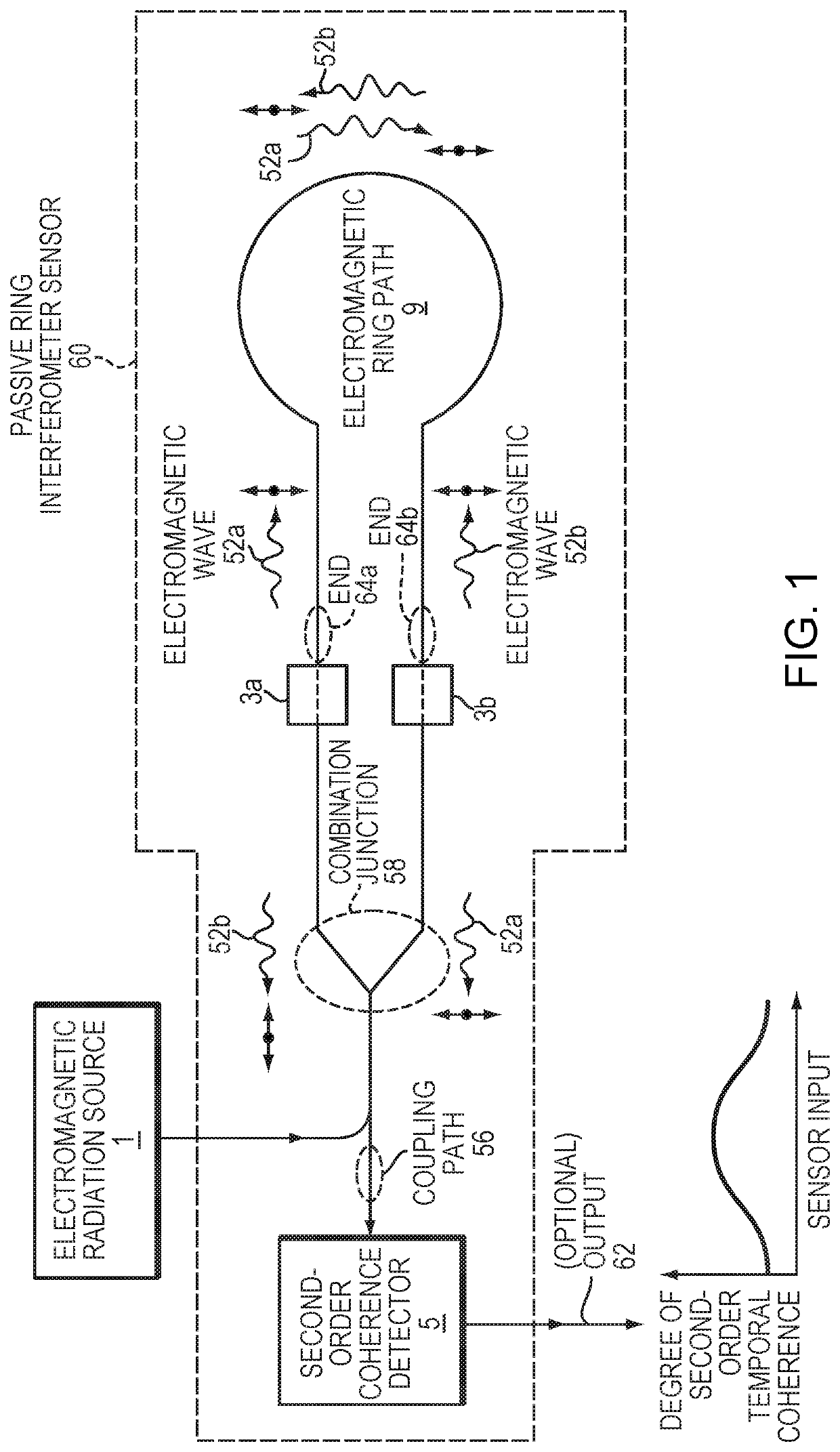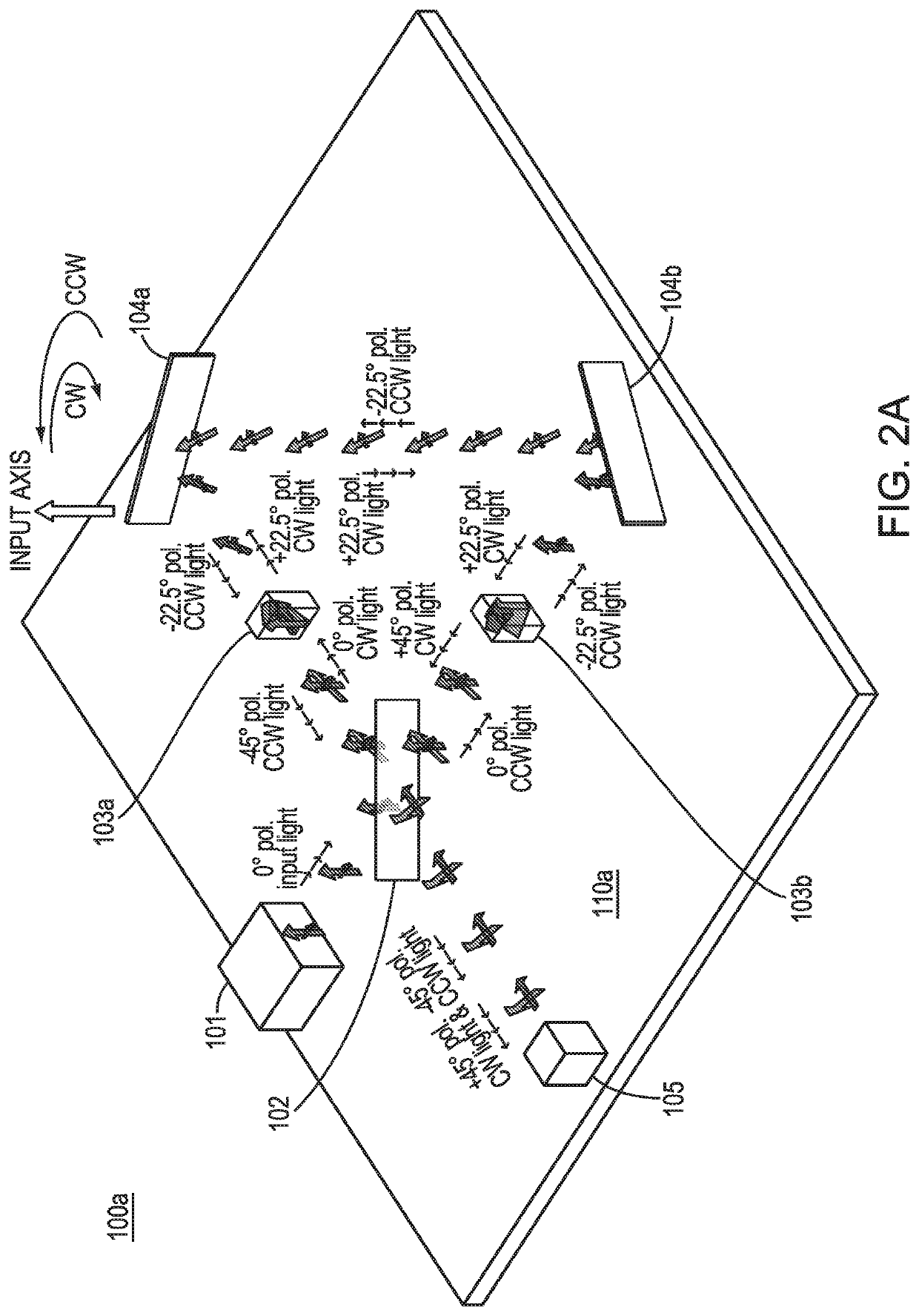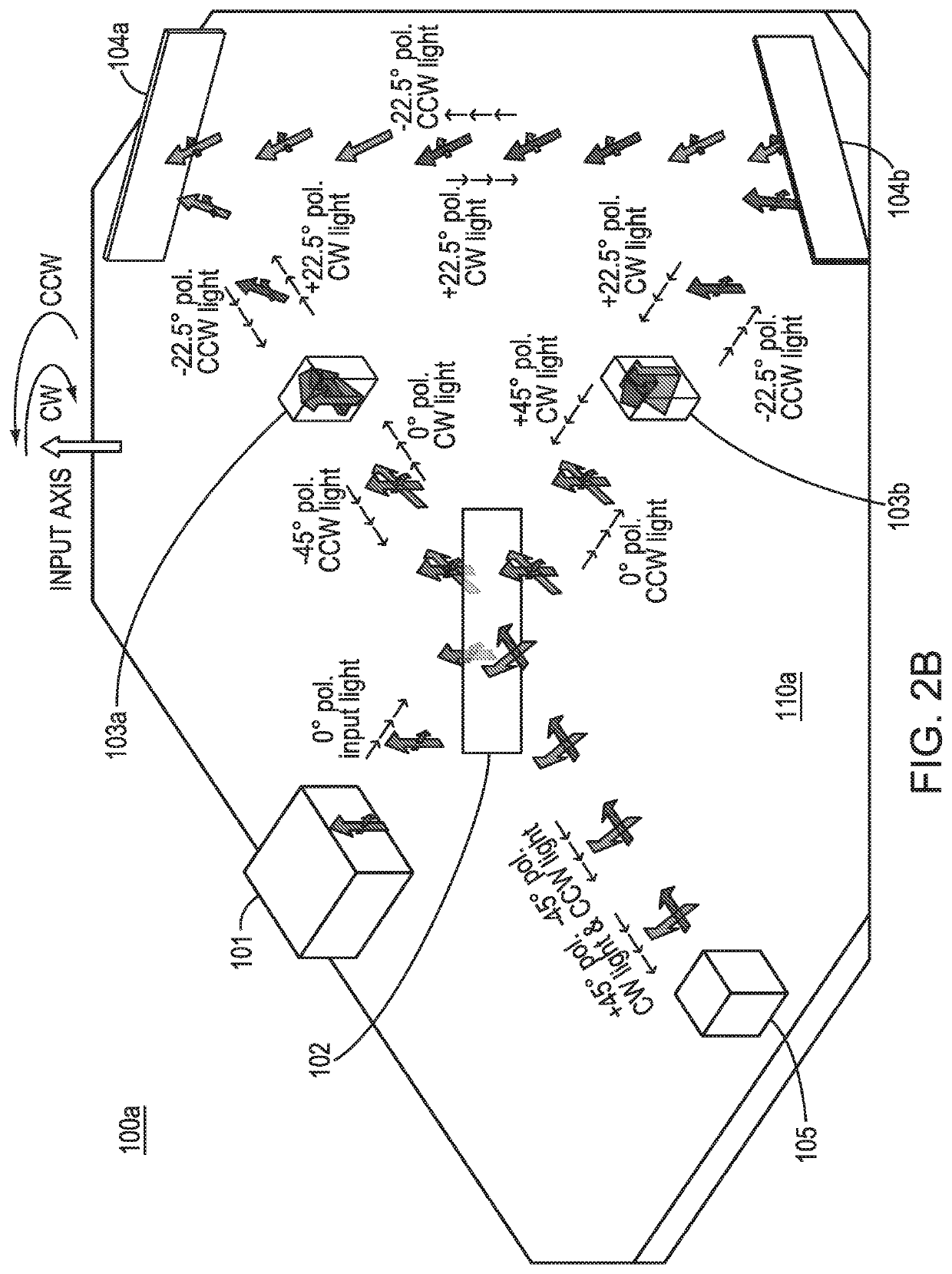Second-order passive ring interferometer sensor and method
a passive ring interferometer and sensor technology, applied in the field of passive ring interferometers, can solve the problems of scale factor instability, limited accuracy of the gyroscope, and various limitations of the passive sagnac optical gyroscope that rely on first-order interference, and achieve the effect of increasing the true unambiguous dynamic rang
- Summary
- Abstract
- Description
- Claims
- Application Information
AI Technical Summary
Benefits of technology
Problems solved by technology
Method used
Image
Examples
Embodiment Construction
[0051]A description of example embodiments of the invention follows. The following is a detailed description of the preferred embodiments of the invention, reference being made to the drawings in which the same reference numerals identify the same elements of structure in each of the several figures.
[0052]Figures shown and described herein are provided in order to illustrate key principles of operation and component relationships along their respective optical paths according to the present disclosure and are not drawn with intent to show actual size or scale. Some exaggeration may be necessary in order to emphasize basic structural relationships or principles of operations.
[0053]FIG. 1 is a schematic diagram illustrating an embodiment passive ring interferometer sensor 60 that functions by detecting second-order coherence. In particular, the sensor 60 includes an electromagnetic ring path 9 that is configured to receive a pair of electromagnetic waves 52a, 52b from an electromagnet...
PUM
 Login to View More
Login to View More Abstract
Description
Claims
Application Information
 Login to View More
Login to View More - R&D
- Intellectual Property
- Life Sciences
- Materials
- Tech Scout
- Unparalleled Data Quality
- Higher Quality Content
- 60% Fewer Hallucinations
Browse by: Latest US Patents, China's latest patents, Technical Efficacy Thesaurus, Application Domain, Technology Topic, Popular Technical Reports.
© 2025 PatSnap. All rights reserved.Legal|Privacy policy|Modern Slavery Act Transparency Statement|Sitemap|About US| Contact US: help@patsnap.com



